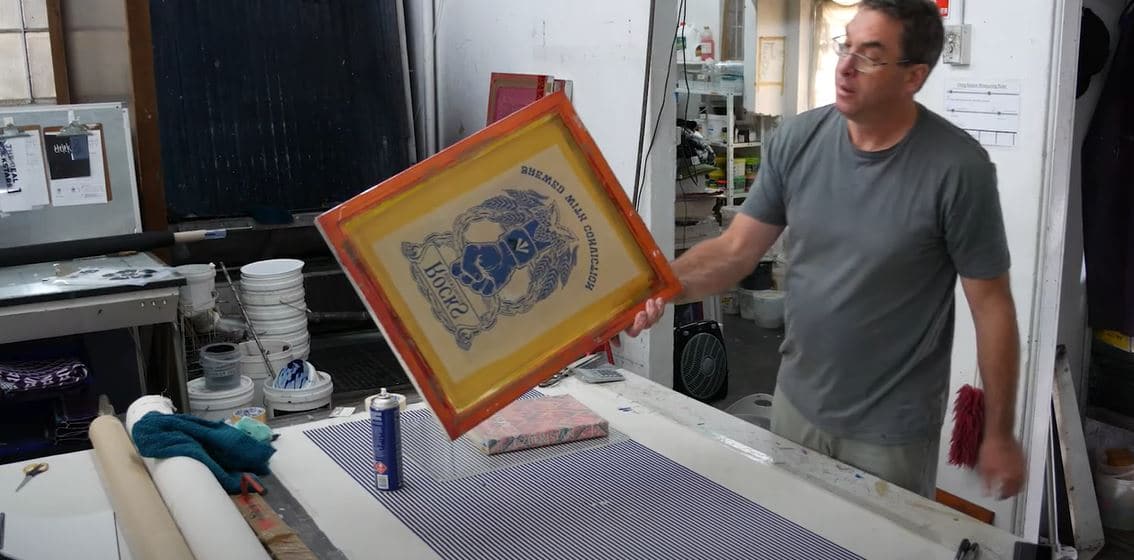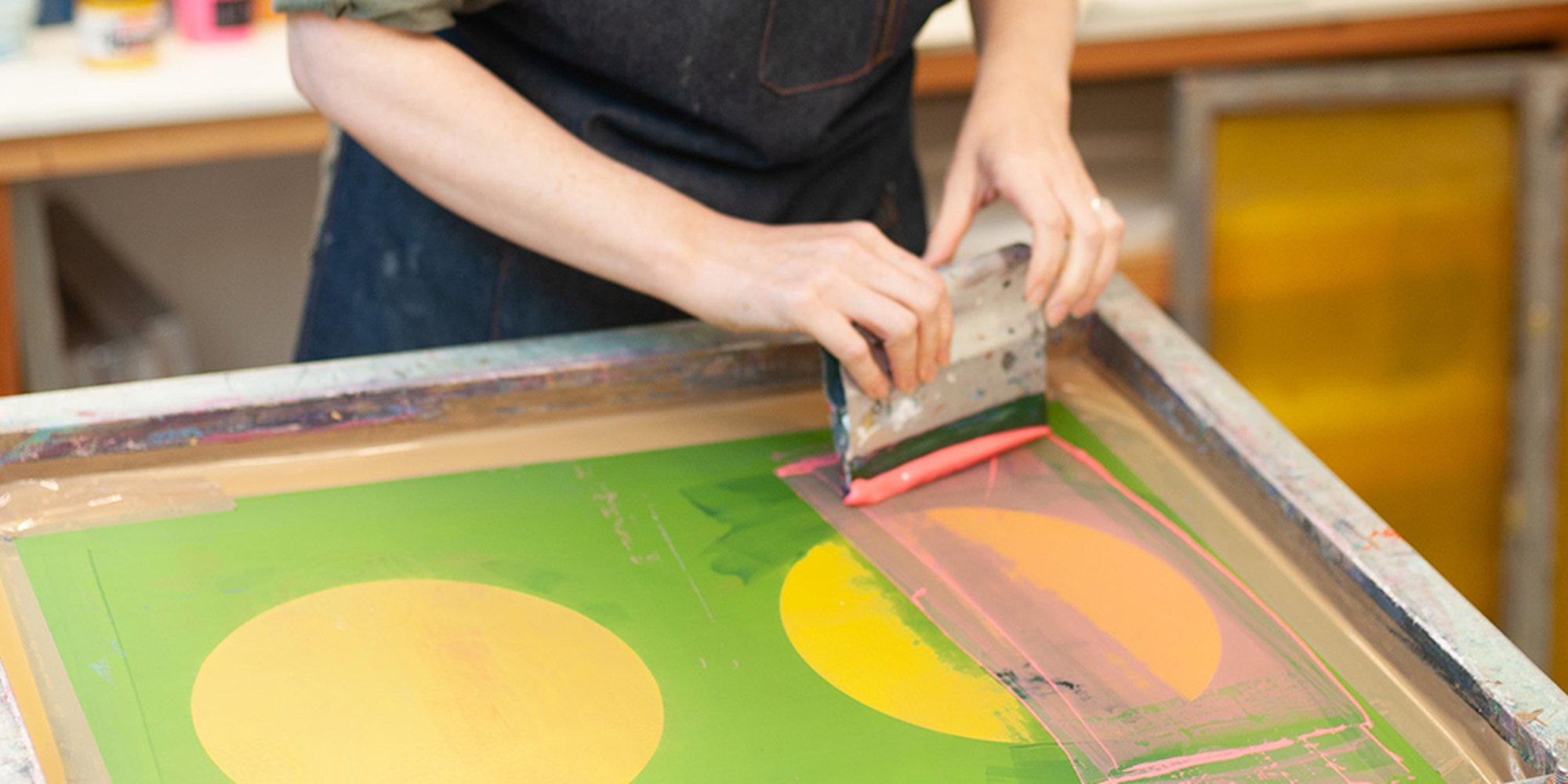Discover the Different Types of Screen Printing Techniques for Your Next Project
Screen printing offers a varied variety of methods that can boost any kind of imaginative task. From conventional techniques like serigraphy to modern developments such as direct-to-garment printing, each strategy has its one-of-a-kind benefits. Specialized options, including green and metal inks, introduce much more possibilities. Understanding these strategies can significantly affect the final result. However, the difficulty hinges on picking one of the most ideal approach for specific demands and desired impacts. What elements should one think about?

The Fundamentals of Screen Printing
Although screen printing may seem complicated, it is fundamentally a straightforward process that includes moving ink with a mesh screen onto numerous surface areas. The strategy begins with the creation of a pattern, which defines the design to be published. This stencil is affixed to a mesh screen, normally made from polyester or nylon. When the stencil is in area, ink is put on the screen and pushed through the mesh utilizing a squeegee, leading to the desired pattern being printed on the underlying material.
Screen printing can be done on a wide variety of substrates, including paper, plastic, and textile, making it a functional selection for different tasks. The procedure permits lively shades and intricate styles, making it prominent in industries such as advertising and marketing, art, and fashion. Understanding these essentials outfits individuals with the foundational understanding needed to check out advanced methods in screen printing.
Conventional Screen Printing Techniques
Typical screen printing techniques have actually been utilized for centuries, protecting the workmanship and creativity of this approach. This method uses a mesh screen to move ink onto a substratum, such as fabric or paper, enabling for long-lasting and vivid designs. The procedure begins with creating a pattern, which obstructs particular locations of the screen to control where the ink will be used.
One preferred technique is serigraphy, frequently utilized for limited editions and imaginative prints. Another is using water-based inks, which are green and provide a soft feel on textiles - 10:9 Design Company. Furthermore, conventional methods can include hand-operated printing, where craftsmens apply ink with a squeegee, guaranteeing precision and focus to detail
These techniques continue to be valued in the industry for their tactile high quality and the distinct textures they create, appealing to both creators and customers who value the heritage of screen printing.
Digital Screen Printing Innovations
As the need for faster production and modification in the printing industry has surged, digital screen printing innovations have arised as a game-changer. This innovation mixes standard screen printing techniques with digital processes, permitting fast prototyping and detailed layouts that were previously hard to achieve. One substantial innovation is the intro of direct-to-garment (DTG) printing, which assists in high-grade, full-color prints on different fabrics without the requirement for displays. In addition, improvements in ink formulations have actually brought about green alternatives that keep dynamic shades while reducing environmental influence. The usage of automated systems further enhances manufacturing, decreasing labor prices and improving accuracy. These technologies not only accommodate small set orders and customized layouts yet additionally enable quicker turn-around times, making them suitable for services concentrated on conference client demands in a fast-paced market. Digital screen printing, consequently, represents a crucial evolution in the domain of printing strategies.
Specialized Screen Printing Techniques
Exploring specialized screen printing techniques exposes a diverse range of strategies that press the limits of imagination and functionality in the printing industry. Among these, glow-in-the-dark inks provide an one-of-a-kind visual impact, making designs come alive in low-light problems. Metallic inks, understood for their shimmering surface, add a touch of high-end to published materials. Another ingenious method is discharge printing, which removes dye from the textile rather than including ink, resulting in a soft, vintage feeling. High-density printing produces an increased appearance on the surface, enhancing responsive interaction. In addition, water-based inks are acquiring popularity for their vibrant colors and decreased ecological impact. Each of these specialized methods satisfies specific layout demands, allowing artists and brands to develop standout items that resonate with their audiences. By leveraging these techniques, organizations can elevate their screen printing jobs to brand-new heights, making sure remarkable impressions.
Eco-Friendly Screen Printing Options
Environmentally friendly screen printing choices are getting grip as the sector moves in the direction of sustainability. Sustainable ink selections and the use of eco-friendly materials are vital components in reducing the ecological impact of the printing procedure. By adopting these techniques, screen printers can add to a more lasting future while preserving top notch results.
Lasting Ink Options

Biodegradable Materials Usage
As the screen printing industry advances, the consolidation of look here biodegradable materials is becoming progressively essential for environmentally mindful techniques. Designers and makers are currently checking out inks and substrates made from natural, renewable energies that break down more efficiently than conventional equivalents. These biodegradable alternatives reduce plastic waste and reduce ecological impact, aligning with the growing demand for lasting products.
Typical instances include water-based inks and natural cotton materials, both of which minimize hazardous chemicals and advertise eco-friendliness. Brand names that embrace these products often enhance their market appeal, bring in customers who prioritize sustainability. As recognition of environmental problems continues to climb, the change in the direction of naturally degradable products in screen printing is most likely to gain energy, fostering a greener market requirement.
Choosing the Right Strategy for Your Project
Just how can one figure out the most suitable screen printing technique for a specific job? The decision pivots on a number of aspects, consisting of the material to be printed on, the intricacy of the style, and the desired manufacturing quantity - 10:9 Design Company. For example, direct-to-garment printing is perfect for intricate styles with various shades, while traditional screen printing stands out for bigger runs of easier graphics
Additionally, factor to consider of the end-use of the published thing is necessary. For exterior applications, strategies that offer durability and weather condition resistance, such as plastisol ink, might be chosen. Conversely, environmentally-conscious jobs may take advantage of eco-friendly products or water-based inks.
Eventually, recognizing the project's one-of-a-kind needs enables for an enlightened option, ensuring both aesthetic allure and practical long life. By examining style complexity, product compatibility, and manufacturing scale, one can successfully select the most appropriate screen printing method to fulfill their project's objectives.
Regularly Asked Inquiries
What Is the History of Screen Printing?
Screen printing came from old China around 1000 ADVERTISEMENT, developing through Japan and Europe. By the 20th century, it became prominent in business art and fashion, changing exactly how layouts were created and dispersed internationally.

Exactly how Do I Prepare Art Work for Screen Printing?
To prepare artwork for screen printing, one must ensure high resolution, utilize an ideal color setting, produce different layers for each and every color, and convert message to details, ensuring compatibility with the printing procedure and desired Recommended Reading result.
What Products Are Best for Screen Printing?
The very best materials for screen printing consist of top notch inks, sturdy screens, and appropriate substrates like cotton, polyester, or blends. Furthermore, using ideal emulsion and squeegees can enhance the printing process and results.
Can I Evaluate Print at Home?
Yes, screen printing in your home is feasible. With the best materials, configuration, and methods, individuals can create premium prints. However, mindful consideration of work area and devices is vital for successful results.

What Prevail Blunders in Screen Printing?
Usual errors in screen printing include inappropriate exposure times, inadequate ink consistency, misalignment of screens, inadequate cleansing of materials, and neglecting to examine prints. These mistakes can endanger the high quality and accuracy of the end product.
Screen printing may appear complex, it is basically an uncomplicated procedure that includes moving ink through a mesh screen onto numerous surfaces. As the demand for faster manufacturing and modification in the printing sector has actually risen, digital screen printing advancements have emerged as a game-changer. Exploring specialty screen printing techniques exposes a diverse variety of techniques that press the limits of creative thinking and functionality in the printing industry. The ideal materials for screen printing include premium inks, durable screens, and ideal substrates like cotton, polyester, or blends (10:9 Design Embroidery). Typical blunders in screen printing consist of inappropriate exposure times, insufficient ink uniformity, imbalance of screens, not enough cleaning of products, and ignoring to examine prints